#at least I have these Victorian queers
Text
Sometimes when the long-hair dysphoria starts hitting too hard you’ve just got to go full impoverished-Victorian-romantic-artist and ponytail it
#WHAT do I tag this one#I feel so sleep deprived rn you have no idea#it’s not even like I didn’t sleep I just slept very badly#I sure do love panic attacks and nightmares. yum yum yummy. I’m losing it a wee bit but you know what it’s fine#at least I have these Victorian queers
24 notes
·
View notes
Text
"mutants are poc analogy" "mutants are queer analogy" Listen, X-Men and as such mutants as a whole should really be disability representation, and I mean representation and not analougous to it they just occassionally also get to blast ice while having furniture not built for them, struggles with keeping their mind in the present, and constantly having people casually discuss sterilizing or euthanizing them and being considered either dangerous or simply incapable of understanding when they get mad about this. But nobody is ready for this conversation.
#Marvel#X-Men#But no as someone who is queer and also has untreated disabilities#Plays at saying being antimutant is metaphorically homophobic mostly just pisses me off#And I'm sure people of color aren't thrilled when Mutants As Analogous To Racism comes up since most of the big names are white#And more often than not this is usually used for Marvel to avoid actually talking about the real issues#Nevermind rarely combine in an interesting way when you do get a gay mutant or a poc mutant or a gay poc mutant#However any time they run into the world simply not being built to accomodate their physical or mental needs and get sneers for asking#You can immediately see me doing the Leonardo DiCaprio point#“but what about Homo Superior” nobody in the 616 knows how genes work because the writers don't#And as a scientist if I have to see X-Gene pop up one more time I'm going to transmogrify into Galactus and eat the planet#One of the biggest experts on Mutant biology is from the Victorian era why are we listening to him#Anyway where are the DIY accomodation features for people with tails or touch telepaths#Rogue basically had to be bubblewrapped most of her life once her powers kicked in#Scott has literal braindamage on top of his powers so he's either blind or colorblind if he doesn't want eyebeam everything#Magneto and Polaris's mental instability probably is related to their electromagnetics fucking with their brains#And Also They Both Have Hella PTSD#Hank has had to make shit that's big enough for him or just run around in boxers#Kurt literally had to use holograms to hide his physical appearance and sometimes still does or has to wear concealing clothes#Logan has chronic pain and rips his skin open any time he pops his claws#Big Fuckoff Migraines plague all psychics#And we have ALL of the Morlocks EVER#Isn't Hellion using his powers to make up for having no hands??#Or at least was before they walked it back like they did the Professor needing a wheelchair#I just think there is an argument to be had here about this
9 notes
·
View notes
Text

From Sherlock Holmes: the Valley of Fear
(Something something queerness was considered a form of insanity in the Victorian era something something mostly I am just Moved by Holmes having a crisis of confidence and needing reassurance before he can go to sleep)
Text under cut:
It was late that night when Holmes returned from his solitary excursion. We slept in a double-bedded room, which was the best that the little country inn could do for us. I was already asleep when I was partly awakened by his entrance.
"Well, Holmes," I murmured, "have you found anything out?"
He stood beside me in silence, his candle in his hand. Then the tall, lean figure inclined towards me. "I say, Watson," he whispered, "would you be afraid to sleep in the same room with a lunatic, a man with softening of the brain, an idiot whose mind has lost its grip?"
"Not in the least," I answered in astonishment.
"Ah, that's lucky," he said, and not another word would he utter that night.
6K notes
·
View notes
Text
Roughly 10 Cool Historical Queer Figures More People Should Know About
Part 1 - From Ancient Era to Early Modern Era
In spirit of Pride Month here's some snippets of queer history I think are interesting.
I've been working on a series of deep dives into interesting historical queer figures, but I haven't had the time to continue my list after the first entry about Julie d'Aubigny. I do want to continue with it, but I came to the realization that I will never have to time to do all the cool and interesting figures in depth, since there's too many, so I decided to do a list with brief descriptions about some of my favorite figures who are not that well known. Some of them are more well-known than others but I think they all deserve more acknowledgement.
I was able to trim down the number of figures to (roughly) 20, which was still too many for one post, so it's two posts now. They are in chronological order, so this part is set mostly before Victorian Era and the second part will be from Victorian Era onward.
This list is centered around western history (but not exclusively) because that's the history I'm most familiar with, though it's definitely not all white, since western history is not all white. I will be avoiding using modern labels, since they are rarely exactly applicable to history, rather I will present whatever we know about these figures' gender, sexuality and relationships. If there's information about what language they used about themselves, I will use that. Often we don't know their own thoughts, so I will need to do some educated guess work, but I will lean towards ambiguity whenever evidence is particularly unclear. If you are the type of person who gets angry with the mere suggestion there's a possibility that a historical gnc person might not have been cis, I encourage you to read my answers to related asks (here and here) first before sending me another identical ask. Try to at least bring some new arguments if you decide to waste my time with your trans erasure.
1. Khnumhotep and Niankhkhnum (latter half of 2400 BCE)

Khnumhotep and Niankhkhnum were ancient Egyptian royal servants, and possibly the first recorded gay couple in history known by name. They shared the title of Overseer of the Manicurists in the Palace of King Nyuserre Ini. They both had a wife and children, but they (along with their families) were buried together in a tomb. The tomb decorations show them similarly as other afterlife couples.
2. Marinos the Monk (c. 5th-8th century)
Marinos the Monk was born as Marina somewhere in eastern parts of Byzantine Empire, likely in the Levant. He was from a wealthy Christian family, possibly Coptic. Assigned female at birth his widowed father planned to marry him off and go to a monastery himself, but he convinced his father to take him with him dressed as a boy named Marinos. His father agreed and they were accepted as monks. After his father died many years later, he continued his life as a male presenting monk. Later he was accused of fathering an illegitimate child with a daughter of an innkeeper, which was not possible, but he didn't revoke the accusations, instead he begged for the abbot's forgiveness for "his sins". Marinos was banished from the monastery and became a beggar. For 10 years he raised his alleged illegitimate child as a father, until he was allowed to return to the monastery and do penance. Only after his death the abbot and the monks discovered his genitals and his inability to father children and were distraught for punishing an innocent man for 10 long years. The real father was discovered and along with the innkeeper and his daughter they all came to honor Marinos' grave and ask his forgiveness. He was canonized as a saint for his sacrificial selflessness, modesty and humility and honored across the Mediterranean from Ethiopia to France.
3. Mubārak and Muẓaffar al-Saqlabi (c. 10th - 11th century)
Mubārak and Muẓaffar were co-rulers of Taifa of Valencia in Muslim Spain. Al-Saqlabi means literally "of the Slavs", which in Al-Andalus was a general term for enslaved northern Europeans, as the two had been enslaved as children. They were in the service of another al-Saqlabi, a chief of police, and they worked they way up as civil servants till a local military coup in 1010, which resulted in them becoming the emirs of Taifa of Valencia. English language sources often describe them as "brothers" and "eunuchs", which gives the "historical gal pals" trope a concerning twist, but contemporary Muslim sources wrote fawningly about their passionate love, trust based on equality and mutual devotion. There was a popular genre of homoerotic poetry in the Islamic world at the time and poems in that genre were written about celebrating Mubārak and Muẓaffar's relationship. In 1018 Mubārak was killed in a riding accident and Muẓaffar shortly after in an uprising.
4. Eleno de Céspedes (1545 – died after 1589)
CW: genital inspection
Eleno was born in Andalusia, Spain, to an enslaved black Muslim woman and to a free Castillian peasant. He was assigned female at birth, given name Elena, and branded as a mulatto born to a slave. She was freed as a child and married to a stonemason at 15-16 years old. When pregnant, her husband left her and died a while later. Later Eleno testified that his intersex condition became externally visible, while he gave birth, and he became a man. He left his son to be raised by a friend and traveled around Spain. After he stabbed a pimp and ended up in jail, he started presenting as a man and openly courting women. Eventually he taught himself to be a surgeon with the help of a surgeon friend.
When he married María del Caño, his maleness was questioned and he was subjected to genital inspection multiple times and it was agreed by doctors that he had definitely male genitals, possibly also female genitals. After a year of marriage the couple was accused of sodomy. Eleno was tried by the Spanish Inquisition and subjected to more genital inspections, during which no penis was found. He claimed that his penis had been amputated after an injury. He defended himself in the trial by arguing that his intersex condition was natural and he had become a man after his pregnancy, so his marriage was legal. He was sentenced only for bigamy, since he had not confirmed that his husband was dead and punished as a male bigamist with 200 lashes and 10 years of public service to care for the poor in a public hospital. His fame attracted a lot of people wanting to be healed by him, which which was very embarrasing for the hospital so he was sent away and eventually exonerated from his charges.
7. Chevaliére d'Éon (1728-1810)

Charles d'Éon de Beaumont was born to a poor French noble family. In their 20s they became a government official and at 28 they joined the secret spy network of the king, Secret du Roi. They became a diplomat first in Russia and later in Britain while they used their position to spy for the king. Rumors circulated in London that they were secretly a woman. While in London they had a falling out with the French ambassador, accused him of attempted murder and published secret diplomatic correspondence. They were instead accused of libel and went into hiding. After the death of Louis XV in 1774 and the abolishment of Secret du Roi, d'Éon negotiated with the French government of the end of their exile in exchange for the rest of the secret documents he possessed. D'Éon took the name Charlotte, claimed she was in fact a cis woman - she had pretended to be man since a child so she could get the inheritance - and demanded the government to recognize her as such. When the king agreed and included funds for women's wardrobe, she agreed and returned to France in 1777. After that she helped rebels in the American War of Indepence - was not allowed to ]go and fight too, ghostwrote her not super reliable memoir, offered to lead a division of female soldiers against the Hasburgs in 1792 - was for some reason denied, attended fencing tournaments till 65 years old and settled down for the rest of her years with a widow, Mrs. Cole. After her death a surgeon reported that she had male primary sex characteristics, but fairly feminine secondary sex characteristics, like round breasts, which might suggest she had hormonal difference/was intersex in some way.
8. Public Universal Friend (1752-1819)
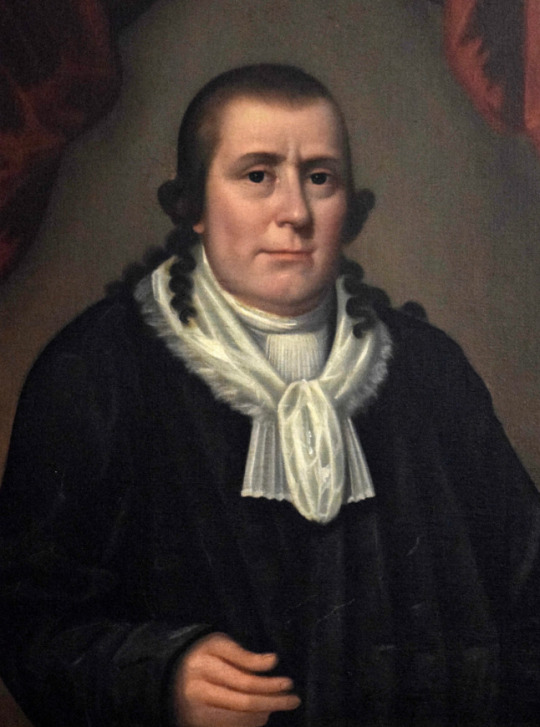
Public Universal Friend, or The Friend or PUF, was born as Jemima Wilkinson to Quaker parents in Rhodes Island, USA. Jemima contracted a disease in 1776, gained intense fever and almost died. The Friend claimed that she did die and God sent the Friend to occupy her body. The Friend didn't identify as man or a woman, and when asked about the Friend's gender, the Friend said "I am that I am". The Friend didn't want any gendered pronouns or gendered language to be used about the Friend. The Friend's pronouns, according to the writings of the Friend's followers, were "the Friend", "PUF" and possibly he. First recorded neo-pronouns perhaps? The Friend also dressed in androgynous/masculine manner.
The Friend started a bit cultish religious society disavowed by mainstream Quakers, The Society of Universal Friends, which I can only describe as chaotic good. The Friend first predicted a Day of Judgement would come in 1780 and when 1780 came and went, the Friend decided it was New England's Dark Day in 1780 and they had survived survived the Judgement Day so all was good then. The Friend preached for gender equality, free will, universal salvation (Jesus saved everyone and no one will go to hell) and abolition of slavery. The Friend persuaded any followers to free their slaves, which is probably the most chaotic good thing a potential cult leader can do with their influence over their followers, and several freed black people followed the Friend too. The Friend advocated for celibacy and was unfavorable towards marriage, but didn't think celibacy or rejection of marriage were necessary for everyone else, so it feels more like a personal preference. Many young unmarried women followed the Friend and some of them formed Faithful Sisterhood and took leadership positions among the Society.
The Society of Universal Friends tried to form a town for themselves around mid-1780s, till in 1799 the Friend was accused of blasphemy. The Friend successfully escaped the law two times. First the Friend, a skilled rider (what's a gender neutral version of horse girl?), escaped with a horse, then after an officer and an assistant tried to arrest the Friend at home, women of the house drove the men away. Third time 30 men surrounded the Friend's home at night, but a doctor convinced them that the Friend was in too poor health to move but would agree to appear at court. The Friend was cleared for all charges and even allowed to preach at the court.
9. Mary Jones (early 1800s–1853)
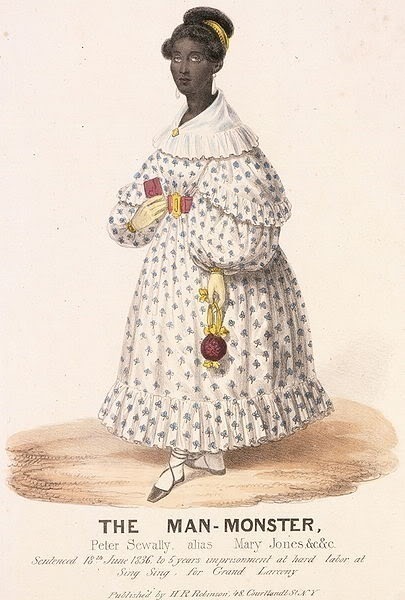
Mary Jones' origin is unknown, but she was an adult in 1836 in New York, USA. She was a free Black person, who preferred to present as a woman. She was sex worker by trade and used a prosthetic vagina. As a side hustle she would steel her customer's wallets, and usually they wouldn't tell anyone because it was 1830s and inter-racial sex and prostitution were illegal and everyone was repressed. Smart. Get your coin, girl. However after one of her more shameless customers discovered his wallet with 99 dollars inside had been replaced with a different man's empty wallet and contacted the police, she was arrested. The police discovered she had male genitals and when they searched her room they found several more stolen wallets. She appeared in court in her female presentation and when asked about her dress, she said that prostitutes she had worked with encouraged her to dress in women's clothing and said she looked better in them. They were right and she had since presented as a woman in her evening profession and among other Black people. She was convicted for grand larceny and sentenced to 5 years in prison. Later she continued to present as a woman and practice sex work, for which she was arrested for two more times.
10. George Sand (1804-1876)

George Sand was pen name of Amantine Lucile Aurore Dupin de Francueil, a French Romantic writer. Amantine was high-born with a countess as a grandmother. George wrote about themself with alternating masculine and feminine language, using feminine language when talking about his childhood, but masculine language often other times. Their friends also used both masculine and feminine terms about them. Victor Hugo for example said about them: "George Sand cannot determine whether she is male or female. I entertain a high regard for all my colleagues, but it is not my place to decide whether she is my sister or my brother." George preferred men's clothing in public, which was illegal for those seen as women without a permit, but they didn't ask for permissions. They alternated between masculine and feminine presentations. They were outspoken feminist, critic of the institution of marriage, committed republican and supporter of worker's rights. They were married at age 18, had two children and left their husband in 1831, but legally separated from him in 1835. They had many affairs with men and some with women, at least with actress Marie Dorval. Their most notable relationship was with Frédéric Chopin, but they fell out before Chopin's death.
#i will be absolutely writing in depth posts about some of these figures#the friend is 100% one of those i fucking love the friend that story is a gift that keeps giving#history#queer history#pride month#queer#lgbtq history#queer tag#trans history#gay history#sapphic history#lesbian history#intersex history
222 notes
·
View notes
Text
LGBT+ Victorians
Since it's Pride Month and Dracula Daily is going to be pretty quiet for most of June, I thought it might be good timing for a little 1890s queer history. Plus I wanted to give a bit more fuel to everyone's queer headcanons for Dracula characters!
Popping this under a cut because it's long.
The start of queer identity
This is a massive generalisation, but for most of British history, being queer was about action and not about identity. The idea that people who wanted to have gay sex belonged to a specific group that was different to other people didn't exist for the most part, at least not at a societal level. (This was also true - more generalisation - for much of the western world. It was very much not true for large swathes of the rest of the world who thought about this in entirely different and varied ways).

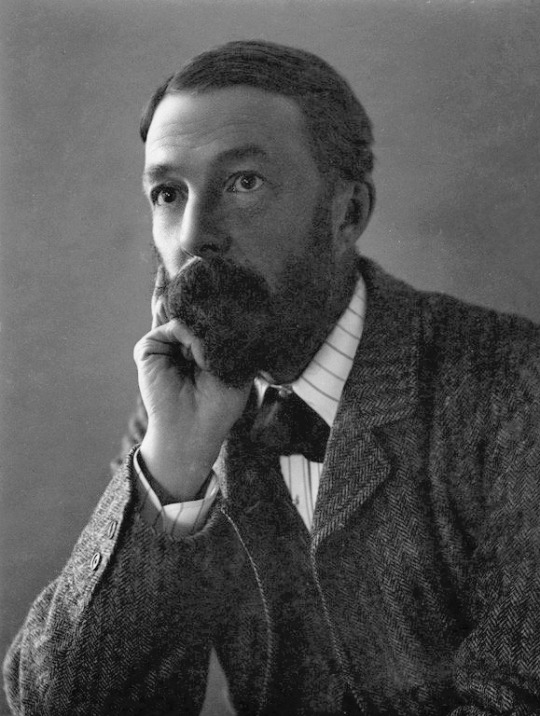
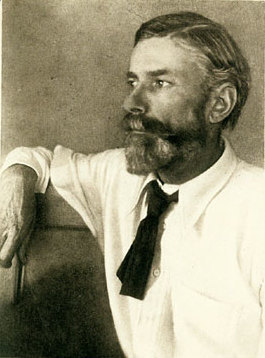
By the second half of the 19th century, that was starting to change. People like Karl Heinrich Ulrichs in Germany (on the left), and John Addington Symonds (middle) and Edward Carpenter (right) in the UK started to think of themselves as homosexuals - Ulrichs coined the term "Urning" which became "Uranian" in English. This period marked the beginning of organised campaigning for LGBT rights in the UK, though specific campaigning for lesbian and trans rights came later.
This means that in the 1890s setting of Dracula, any characters might think of themselves as "Uranian" or "Sapphic", or they might not yet have picked up that way of thinking. At a guess I'd expect Seward or van Helsing to be particularly aware of the new theory around homosexuality.
LGBT rights in law
It was a mixed time for the legal position of LGBT people. The death penalty for sodomy was abolished in 1861 in England, Wales and Ireland (1889 in Scotland), and replaced with minimum 10 years hard labour. In 1871, two amab people, Boulton and Park, were tried for dressing as women, but the judge ruled that this was not an offence under English law (though he also said that he thought it should be).
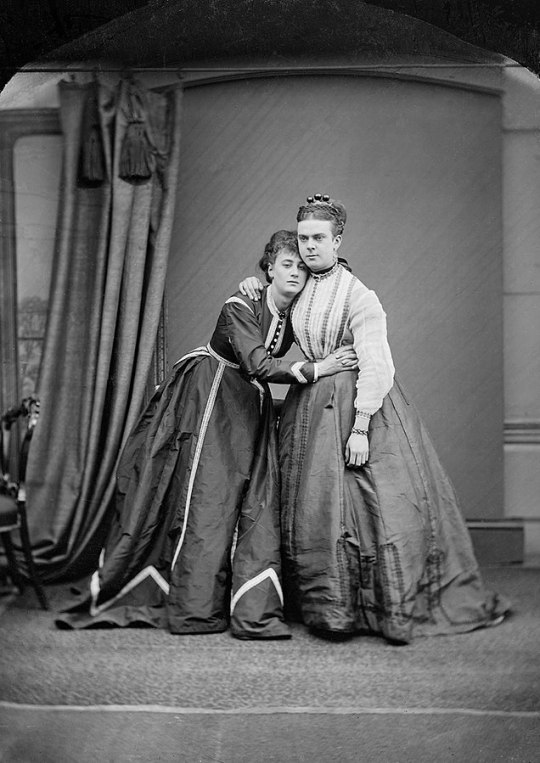
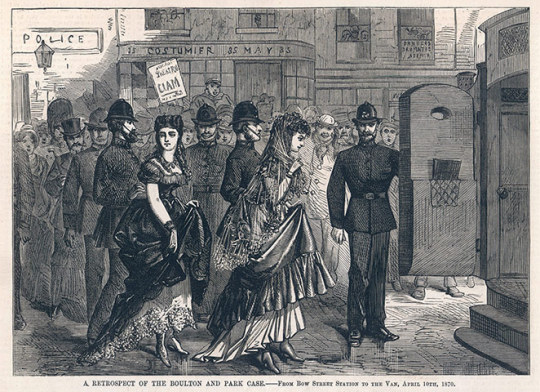
On the left: Fanny Park and Stella Boulton; on the right, the Illustrated Police News' depiction of their arrest.
And in 1885, the Criminal Law Amendment Act reduced the minimum sentence for gross indecency from 10 years' hard labour to two.
That said, before that act was introduced, there had to be a witness to any sodomy or gross indecency for it to be prosecuted. The Criminal Law Amendment Act changed that, so all private acts, arguably even love letters, could be prosecuted. So despite the reduction in sentences, this change to the law made life harder for queer men in the 1880s and 1890s. From a Dracula perspective, this means that people would be much more careful about what they wrote down - significant for a novel made up of documents.
Lesbian sex has never been illegal in the UK. (The idea that this was because Queen Victoria didn't believe in lesbianism is a myth). But in the 18th century there were a series of prosecutions of afab people who lived as men and married women. They were prosecuted for fraud when their birth sex was discovered, because they were perceived as having defrauded their wives. There were far fewer such prosecutions in the 19th century, possibly because of the belief that it was better not to create the publicity of a trial.
Victorian WLW
There are HEAPS of notable Victorian lesbians and bisexual women, including a lot in the suffragette movement. So I've chosen a few examples based on there being good images on Wikipedia.
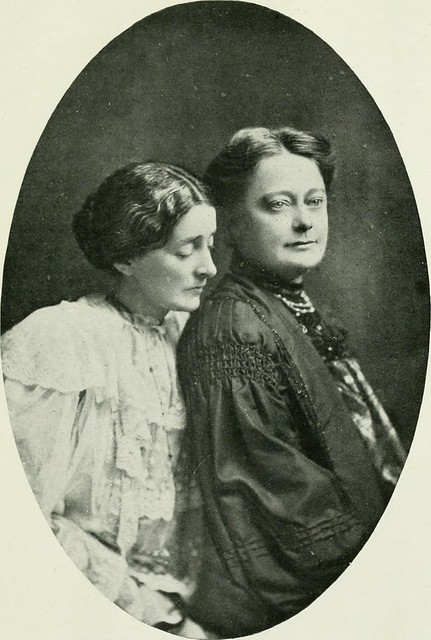


From left to right:
Margaret Benson and Janet (Nettie) Gourlay were Egyptologists who met at the excavation of the Precinct of Mut. Almost all of Benson's family preferred same-sex relationships.
Louisa Baring, Lady Ashburton, was briefly married to a man, but when she was widowed, began a 25-year relationship with American sculptor Harriet Hosmer. Harriet described herself as Louisa's "hubby".
Matilda Hays was a mixed-race writer and actress who had a relationship with American actress Charlotte Cushman, with whom she's pictured. Hays aimed to use her writing to improve the condition of women.
Victorian MLM
Again, I've chosen people to highlight through the very representative method of good photos.
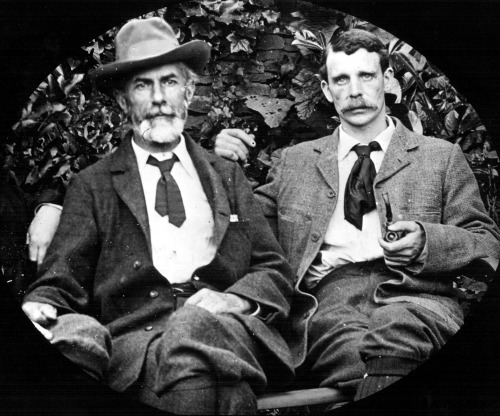
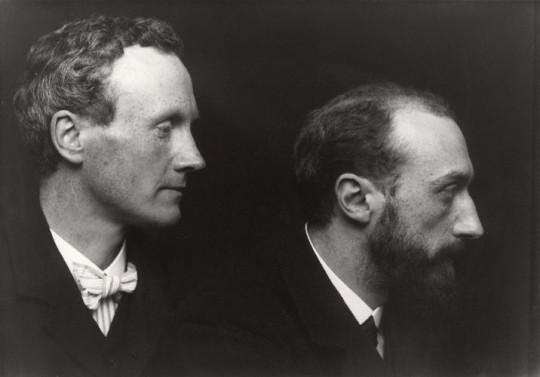

From left to right:
Edward Carpenter was a socialist, poet, philosopher and early gay rights activist who met his partner George Merrill on a train. The two men came from very different backgrounds: Carpenter from privilege, and Merrill from the Sheffield slums. Their 40-year relationship inspired the ending of EM Forster's novel Maurice.
Charles Ricketts and Charles Haslewood Shannon were artists who met as teenagers and lived together for more than 50 years. In the Times' obituary for Ricketts in 1931, their relationship was described as being "as remarkable as any of the great historic friendships, or the finest Darby and Joan examples of wedded felicity".
Ned Warren and John Marshall were art collectors who together were largely responsible for the Roman and Greek Art Collection of the Boston Museum of Fine Arts and the Metropolitan Museum of Art. Marshall married Warren's cousin, Mary Bliss, but only on the condition that the marriage would not be consummated. All three lived together until they died and were buried in the same tomb.
Trans Victorians
I wrote last year about Dr James Barry, a Victorian trans man, in the context of whether Jack Seward could be trans. (The post is from October, but spoiler free).
Eliza Edwards was an actress who died in 1833 at the age of 24. Her body was autopsied, and discovered to be - in the words of the autopsy - "a perfect man", which had apparently not been known to any of her friends or colleagues.
Harry Stokes was a bricklayer in Manchester, who was outed as trans in newspaper articles during his divorce 1838 and again after his death in 1859. He became something of a figure of fun after being first outed, but met another woman who lived with him as his life, and was broadly accepted by the local community as a trans man.
It was only through chance that James, Eliza and Harry were outed (and in James Barry's case, despite considerable efforts on his part). There might well have been hundreds or thousands more people like them.
And Boulton and Park, who I mentioned above, have usually been treated as transvestite men by historians, but could equally - had they had the terms themselves - be identified as trans women. Some contemporary newspaper articles even used she/her pronouns for them.
Asexual Victorians
Asexuality is tricky to spot in history, though even in 1896, German sexologist Magnus Hirschfeld was identifying it as a distinct phenomenon. What we do know is that more than 10% of women and a little under 10% of men in the 1890s never married, and in some cases that may well have been because they were asexual or aromantic.
From a Dracula perspective, family rumour held that Florence Stoker declined sex with her husband after the birth of their child. That may or may not have been true (and there's a ring of aphobia to some of the family's claims) but it shows how asexual people might also be found in apparently conventional marriages.
Sources
British Library: A Short History of LGBT Rights in the UK
British Library: A timeline of LGBT communities in the UK
Girlfriends of Dorothy: A Timeline of Lesbian Rights UK 1601 - 2020s (note: the site intends to be trans-inclusive, but genders John Barry as female.)
Open University: Lesbianism and the criminal law of England and Wales
“Constant Companions” and “Intimate Friends”: The Lives and Careers of Maggie Benson and Nettie Gourlay
Sapphic sexuality: lesbian myth and reality in art and sculpture
British Library: Transgender identities in the past
Warp and Weft: The extraordinary life of Harry Stokes
British Academy: Happy Families?
Coitus Interruptus: Sex, Bram Stoker, and Dracula
'Missing person' Florence Stoker added to DIB
762 notes
·
View notes
Text
Do you ever start something as a joke and lose complete control over your life?
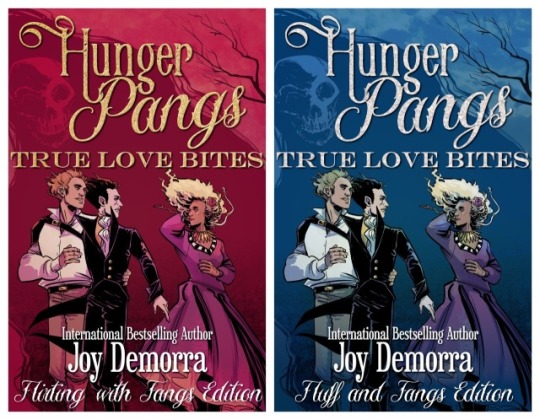
In a world of dwindling hope, love has never mattered more...
[read the full blurb here]
What is Hunger Pangs?
Hunger Pangs, often shortened to “Phangs” by the self-proclaimed phangdom, is my debut romance novel, published in Nov 2020, featuring a deaf, disabled werewolf, a neurodivergent, mad scientist vampire, and an all-powerful enchantress who is the last of her kind.
It is the first book in a slow-burn, polyamorous gaslamp fantasy romance series focusing on the relationship(s) and antics of the three main characters, Nathan Northland, Vlad Blutstein, and Lady Ursula, as they work to save the world they love from imminent magical and ecological disaster.
The first book primarily focuses on the relationship between Nathan and Vlad, with Ursula heavily alluded to in the next book (Pride and Folly) via some shameless flirting and stolen, impulsive kisses.
No love triangles here. Just three highly competent, world-saving bisexuals sharing the same brain cell the closer they get to each other.
There are two editions of the novel. The Flirting with Fangs edition depicts on-page sexual acts, and the Fluff and Fangs edition which uses alternative scenes/fade-to-black scenes for those who prefer not to read depictions of sex. You can read more about why I decided to do this here.
How Did Phangs come to be?
Like most things on my blog, the original concept began as a joke. My friend and enabler, @jeneelestrange, and I were talking about our least favorite tropes in romance/erotica, including but not limited to toxic “alpha” werewolves, brooding stalker vampire boyfriends, and the absolute profound bullshit that is the Conflicted Love Triangle and Bury Your Gays.
Eventually, it culminated in this post:

(source)
It was meant to be a joke. I really cannot emphasize this enough. It was meant to be a shitpost between friends.
A throwaway ADHD impulse.
Tumblr, however, wanted more of these posts, and like a swarming mass of drift-compatible rats in a trench coat, grabbed hold of my lack of impulse control and Ratatouille'd me into becoming an international bestselling author, and, well, here we are.
I also started writing the series while dying, which I highly do not recommend as a functional creative process.
Absolutely do not start a 500k five-part novel series about love and hope while dying from an undiagnosed genetic disorder. Or if you do, make sure you actually die so you don't have to edit the damn thing. (I am mostly kidding.)
What are the themes/tropes/character dynamics of the book?
In the simplest of terms, Phangs is a queer-polyamorous-paranormal-satirical-romance series featuring vampires, werewolves, and all other manner of creatures that go bump in the night.
It is set in a pseudo-regency meets fake-Victorian Gaslamp Fantasy world, complete with gothic castles, enchanted forests, and just a smidge of industrial coal dust.
Style-wise, Phangs has been described by readers as "like reading the queer, goth love child of Terry Pratchett meets Jane Austen," and I've never been more proud of anything in my life.
If Game of Thrones ascribes to the idea that the night is dark and full of terrors, Phangs is the monster-fucker politely sidling up to them at the bar and asking if they can buy them a drink.
It is also primarily a love letter to fandom, which has led some people to believe it’s fanfiction with the serial labels filed off. But as the person who spent five years agonizing over the world-building, I can assure you this is all very much the product of my weird little ADHD brain picking up tropes, shaking them upside down, and running off with whatever fun and interesting things shake loose.
As already stated, the first book, True Love Bites, focuses primarily on the relationship between Captain Nathaniel J. Northland and Viscount Vlad Blutstein.
The first part of the book primarily focuses on Nathan coming home injured from war and trying to find his place in the world as newly deaf and disabled -- something which alienates him from his werewolf family, who don't know what to do with an injury that can't be mended by a full moon.
While working on the island of Eyrie, he encounters Viscount Blutstein -- Vlad-- a neurodivergent, mad scientist dandy vampire with an enthusiasm for demonic botany and a streak of unfailing kindness as broad and expansive as the sky.
It's not so much love at first sight for the pair as instantaneous lust hampered by the restrictions of polite 1880 society and old ingrained prejudices that make them think the other couldn't possibly be interested in them that way. They're just misreading all those heartfelt stares and sexually charged chess games.
(The love is requited, your honor, they're just idiots.)
Both characters are explicitly queer/mspec, as is Ursula, who drops into their world like a magical atom bomb going off, but not before she spends her own parts of the book desperately trying to figure out what manner of dark entity is killing the magical shrines around the world that keep the world alive.
Thematically, the series touches on many things, but the book’s overriding theme is love. Romantically, of course, and love between families, both found or otherwise. But also love as an act of courage. As a choice. An act of defiance in dark and troubling times, and what it means to be loved and belong even though you’re different.
Especially when you’re different.
And I really fucking hope you enjoy it.
To read the full synopsis and check out the heat ratings, buy links and content tags, go to www.joydemorra.com
143 notes
·
View notes
Text
Straightwashing The Picture of Dorian Gray?
Two days ago, the Internet discovered a prospective Netflix adaption, that of The Picture of Dorian Gray into a tv show The Grays. (Deadline)
As the title entails, Katie Rose Rogers (writer) has made the choice to give the protagonist of Wilde’s novel a brother. She allegedly decided not to add a new Gray but to turn a pre-existing character into a relative of the oh-so-famous Dorian Gray: Basil Hallward.
The painter of the cursed portrait that contains and manifests all of Dorian’s flaws and villainy, the adoring artist infatuated with his muse and his beauty, one of the characters often analysed in queer studies of the novel, will be turned into Dorian’s brother.
Narrative license is a common occurence in the art of adaptation, but the writer’s choice raises some issues on the Internet considering the original novel, its impact on its author’s life, as well as its importance in the field of research and its role in representing queerness in history.
The Picture of Dorian Gray is an 1891 work of literature written by Oscar Wilde. The novel, itself derived from an early novella-length work, tackles the moral descent of Dorian Gray as it never takes shape on his forever-young angelic face (and thus going against the belief of physiognomic degeneration of its time) but instead taints a portrait made of him by a friend—the aforementioned Basil.
Connoisseurs and those less interested in the works of Oscar Wilde tend to know at least two things about the author:
one, he wrote Dorian Gray;
two, he was a homosexual.
It is no secret that his novel is submerged by the homoerotic feelings the characters harbour towards one another. While the characters do not overtly engage in romance—a feat which would have led to a bigger scandal than it already was—they do present characteristics that are outwardly associated with queerness. Be it Lord Henry and Dorian Gray taking on a mentor/mentee approach close to Greek pederasty (educational), or Basil and Dorian adopting the artist and muse situation-ship often reserved to male artists and their female objects of inspiration and idolatry, the male/male relationships in the book deviate from normative Victorian masculine and homophile behaviours and extend into unspoken homosexual territories.
In the case of Basil, transforming him into Dorian’s brother means erasing the scandalous and ambiguous relationship between the characters that is often read as being one of the many reasons behind the decay of the portrait, by denoting the repression of nonconforming identities. Basil is written as admiring the beauty of Dorian: he considers him his own personal muse, the driving force behind his art, one that cannot be beaten and that pushes him to be a greater artist. He is as enamoured with Dorian as the Pre-Raphaelites were with women.
In the uncensored version of Dorian Gray, made publicly available in 2011, Basil says quite explicitly to Dorian Gray:
"It is quite true I have worshipped you with far more romance of feeling than a man should ever give to a friend. Somehow I have never loved a woman.” (The Guardian)
In the version commonly read by the general public, Basil also tells Lord Henry (about Dorian Gray):
“I find a strange pleasure in saying things to him that I know I shall be sorry for having said.” (Chapter 1)
This simple sentence reveals an unusual relationship constituted of deviant expressions of sentiments between Victorian men.
In the Basil/Dorian relationship, the latter is feminised through his position as Basil’s muse, he becomes an object of desire and obsession, then an enactor of violence through his ever-lasting youth and beauty, making him a relative of the femme fatale type.
Erasing the grey area between the two characters diminishes the complexity of Wilde’s work as a public critique of Victorian gender roles and morality, especially in light of his own trial and prison sentence for which the homoerotic subtext has been used as proof. This raises the issue of straightwashing and how easy it is to erase queerness in the entertainment industry to accommodate to an heteronormative vision.
——————
https://www.theguardian.com/books/2011/apr/27/dorian-gray-oscar-wilde-uncensored
https://deadline.com/2024/08/dorian-gray-series-netflix-katie-rose-rogers-rina-mimoun-greg-berlanti-1236045373/
https://www.history.com/topics/gay-rights/oscar-wilde-trial
#dorian gray#the picture of dorian gray#book adaptation#oscar wilde#netflix#this is for me to practice writing don’t break my knees#gothic#victorian#literature#queer#queer books#queer history#gothic literature#lgbtq books#queer lit#classic lit#tpodg
55 notes
·
View notes
Text
Queer people in the middle ages

So, the whiny manchildren, who want the middle ages to conform to their white supremacist fantasy, also keep claiming that there were no queer people in the middle ages - or that in fact queer folks just miraculously materialized at some point in the 1970s. But let me talk about one thing: How do we know that there were queer people in the middle ages? And how do we know that actually apparently at least some queer people in the European middle ages were living fairly openly?
Now, the very obvious answer to the first question is, that we do know that biologically queerness is simply a part of human nature. We know that just some people will be queer. How many people are queer... Well, biologist and psycholigists will argue with no end about this. Because of course we cannot look at someone and say "Oh, definitely a queer person", so we can only base our assumptions on what people say when asked. And we absolutely do know that how many people will admit to being queer the less afraid they are of societal consequences. Of course, biologically we can look at some apes and will see that their group behaviors work centrally over exchanging sexual favors with basically most apes being bi... But yeah, currently we can only guess. Maybe 10% of all humans are queer in some way or form - maybe it is more like 50%, maybe even more. We don't really know.
But what about the middle ages?
See, here I gotta say that I at times am annoyed with the way a lot of queer folks interact with history by just speculating about the queerness of some well known historical figures. Don't get me wrong, quite a few of them might have been queer. But this also falls into a very typical falacy.
Basically, when we talk about history we have the bad habbit of talking mainly about a few well known historical figures. When it comes to the middle ages, this narrative tends to focus mostly on clergy and nobility. This is partly because we have the best historical record of them - but also because to this day we tend to overvalue the lives of people who have influence.
And the other falacy is, that we just assume that the Victorian ideals about sex were true in the middle ages and that henceforth people were not able to be open about it.
Because here is the thing. We actually do have records of people being fairly open about it. This is partly records we have from lower nobility and especially gentry, but at times also from the peasants and normal folks that history often tends to ignore.
See, when I look at the historical record I could not care less about the richer nobility and royalty. Because their lives could not be further removed from normal society at the time. And especially I do not really care about the politics in terms of wars and aliances and such. Because it tells us fairly little about what LIFE at the time actually looked like.
No, the stuff I find interesting is the letters send by normal people - and stuff like grafitti. Maybe diaries, we still have access too. Or one interesting source I found for the middle ages: A collection of jokes a French monk wrote down over the course of years.
Because this is the kind of source that reflects the life of normal folks a lot better than whatever political drama some duke or king or bishop was involved in.
And in those sources you will find... that people are actually fairly open in talking about queerness. Heck, we even have sources in this regard that talk about specific sexual acts. Going so far that through this we have at least some vague ideas about kink at the time (though that really is a topic on which the historical record is super light).
In fact we have sources of this sort going back to the ancient times, even. Which is also why we know that the Romans in general were a lot more put off by queerness than people in the early and high medieval times. (Mind you, this did not stop the Romans from having gay sex, they were just a lot more scandalized by it!)
Of course, this is nothing that people are taught in school. Heck, you can manage to study history and still be ignorant of this, because this is not the type of sources a lot of history is concerned with or was concerned with for the longest time. Recently this is shifting a bit - but shifts tend to be slow.
So, yes, we know that queerness was definitely something that existed in the middle ages. Yes, the time was still very heteronormative - but it was clearly also less scandalous about queerness than either the Romans or the folks in the Rennaissance.
#history#european history#medieval europe#medieval#medieval history#queer#queerness#lgbtq#queer history#fantasy#high fantasy#dungeons & dragons
181 notes
·
View notes
Text


hello again dear anon! 💖
to respond to your second question: yes, I know a few places you could check out! ☺️☺️ I've made a little list:
I simply must shout out I Do Declare, an incredible queer-owned and ethically manufactured clothing company! I believe they currently go up to 3xl, although they've been consistently expanding their size ranges since I've been aware of the brand. they tend to do limited releases and pre-orders throughout the year rather than having things consistently in stock, so it's worth signing up for their newsletter or following them on social media if you're interested in getting something from them. you can still view all their styles in the "shop" tab of their website, so you can see the kinds of things they've offered in the past 💕
Blackwood Castle is another queer-owned, ethically manufactured clothing company, although they tend more toward the gothic and the victorian rather than medieval/renaissance. but depending on how you styled the pieces – or the aesthetic you had in mind – their pieces could still give that fun ren faire historic flair! I believe their sizes go up to 5xl, and while not all of their pieces have low necklines, a number of them do, so it might be worth checking out their site! 💖
my last recommendation is Firefly Path, although I do want to put the caveat here that I have never ordered anything from them, so I can't personally speak to the quality of the garments. however, I wanted to add them here since they are a small studio that takes custom orders, if that was the route you wanted to go. because they do customs, I believe they could do almost any size or garment type. they focus on fantasy-inspired clothing, and I could totally see their garments being worn to a ren faire 💕
one last piece of advice I'll add here for finding similar clothing is to look around on social media and see who your favorite brands/designers follow and interact with. that's honestly how I found a lot of these great companies! ☺️☺️
I hope these are at least a little bit helpful, and if anyone else has any recommendations, feel free to drop them in the comments below! 🥰🥰
also a disclaimer that these are not paid promotions and I am not affiliated with these companies in any way – I just either really enjoy their clothing and/or think they could be a good resource for the kinds of garments you're looking for 💕💕
47 notes
·
View notes
Text
"It's three seasons old, at least," said Phillip, in a pained voice. "What sort of provincial backwater did you buy it in?"
"The Little Dover Dress Shop." Visander bit out each word, fuming that he knew the answer.
"It still has an empire waist," said Phillip, a kind of agony on his face. "You know, here we have fashion, we don't just go about wearing robes for ten thousand years."
"I care nothing for your human fashions, worm," spat Visander.
Dark Heir by CS Pacat is a comedy. Or, in other words: if book 3 is not a married-life sit-com between Phillip and Visander I riot.
(In other, other words: there are so many fantastic romantic dynamics in this book, but the one couple I have imprinted on like a baby duckling is the queer murder-machine with tunnel vision stuck in the body of a Victorian ingénue and his husband Who Really Does Not Want To Be Here and can endure his wife being "a dead man from a defunct world" but draws the line at him not dressing for dinner.)
#dark rise#dark heir#me when Visander was introduced: oh no he's going to take time away from the characters I love#me after like two chapters in his pov: he is the character I love actually#same with Phillip except he's not even a pov character#introduction: oh no who cares about Simon's brother no one mentioned in book 1#I do I care#oh no a character who is being forced to fill his dead brother's shoes when that brother was obviously their father's favorite#and who is obviously so much better than his brother but because his interests run to fashion and balls and carriage#instead of to world domination he's been discounted by the people around him his entire life#who is fundamentally kind and compassionate and no one seems to appreciate it#anyway I have finally gotten around to reading this book and inhaled it in less than 24 hours and I'm going to be very annoying about it#visander#phillip creen
65 notes
·
View notes
Text
In Memoriam Headcanons!!
cus i’m still insane about them and want nothing but happiness for our boys
~spoilers for the book ahead-
• In Brazil, Gaunt and Ellwood almost always wear coordinating ties and handkerchiefs (either wearing the same pattern in different colours, or vice versa, or by swapping so that one has the kerchief to go with the others tie)
• Gaunt tried to write a poem about Ellwood once. He got four lines in and got embarrassed with himself and went to box instead. he left the page in her desk drawer and never found it again.
• Contrary to popular belief, Gaunt is a riot at embassy events in Brazil (when he actually joins in conversation). He just makes blunt, usually unwittingly witty comments that make the tipsy embassy blokes roar with laughter (that tism humour fr).
• Ellwood loves to host. in the beginning, it’s to fill the void of living in brazil and the aftermath of the war, but he finds that he really enjoys it. utter peacock.
• Ellwood loves the flowers in Brazil, but he can’t often find some of ones that align with the victorian flower language. So, he invents a new flower language just for him and Gaunt.
• Ellwood, ever spiteful, used to step on the toes of young women who flirted with Gaunt at balls when it was his turn to dance with them. Despite how much it pained him to risk damaging his reputation as an excellent dancer.
• They used to have snowball fights at Thornycrpft when they spent Christmas hols there together.
• Gaunt rarely speaks german, but when he’s particularly drunk, he starts whispering german terms of endearment into Ellwood’s ear. Ellwood doesn’t have a clue what he’s saying but he’s not complaining.
• Having baths together (partly as an inside joke, partly cus <3 )
• I’m sure they would have a pet, but can decide on what animal. i can picture ellwood getting an exotic bird for parlour tricks when he’s hosting, giving it an eccentric name (like Benedict or Florian) but actually getting super attached. Or, Gaunt having a realy pampered cat (probably a white long haired breed). ORRR Gaunt finds a dog that reminds him of his old dog at home and has a ‘can we keep him’ moment
• Gaunt publishes his translations. perhaps he makes them more accessible for people who aren’t getting that upper class public school education, with english translation accompanying the original greek (inspired by his friendship with Hayes). Maybe Hayes reads them and resolves that they’re just ‘decent’
• If they return to england, Ellwood brings his hosting reputation with him, and holds a party upon his return to england and before their departure back to brazil or wherever their travels take them every time. unwittingly attracts a LOT of upper-class queers.
• they get (fake) married one day. they get matching wedding bands in whatever metal matches the other’s undertones (cus this is the type of thing at least one of them knows). they get to cal each other ‘husband’ in the comfort of their own home.
#wow this is a lot#it’s been quiet in this tag to recently#so feel free to add ur own hcs!!#the preshutians#henry gaunt#sidney ellwood#gauntwood#in memoriam#in memoriam alice winn
44 notes
·
View notes
Text
Writeblr Intro circa 2024
Hi writeblr!! Sooo, I've been around here since about 2014. (Yes, I am ancient.) However, I've been dormant for the past 4-5 years. Blame college and a brief stint on Twitter. Now that I'm active again, I thought I should make an updated writeblr intro so ppl know my Deal. Basically, I want to engage with other folks who write fiction (esp original SF), and that's a little easier if I have a clear post that outlines what I do. Here to make connections and hear about your blorbos :)
About me
Hi, I'm Vee! They/them, 23, 💖 🤍 🧡
I do journalism/comms in western New York
My literary jam is feminist/adult SF and gothic lit (OG or modern) 🥀 ⚔️ 🌙
Enthusiastic about gay people, body horror, and sociopolitical allegories
I cook, run, play tabletop games, and occasionally draw. Other than that, I'm mostly writing (for work and for fun)
If you were on pre-2020 writeblr, you likely know me from my eight billion daily tag games. (I still like tag games and appreciate u for tagging me. I have also gained adult responsibilities and better mental health, so I respond very slowly now. <3)
Always happy to get asks or dms, tho as I've noted: I may reply slowly.
Sometimes open to beta read! I only read one longer project at a time, but it's always super fun :)
I tag very consistently – happy to tag triggers for followers/moots
Fun fact: I love mushroom hunting and worked as a mycology TA. #cottagecoreera 🍄 🧚♀️ 🌱
About my creative writing
I write,,,, feminist/adult SF with gothic leanings (surprise!)
Longform and short! Trying to do more short writing this year, and I'll likely share a bit on Tumblr. It's easier to clip a short story than a 150k novel, god bless.
The Aesthetic: moral g(r)ays, Victoriana, androids/cyborgs, Women™, monstrous femininity, incessant Hamlet/Frankenstein motifs, extremely boring socioeconomic worldbuilding, evil queens and/or dilfs, psychosexual witchcraft, probably a cat. Also, an ominous, plot-relevant letter laced with anthrax from your unhinged and brilliant ex-wife. Open if you dare.
Major projects
I'm going to be writing some short work this year, but these are the longer projects that I have going in the background. If I reblog blorbo-related text posts, they probably have something to do with these.
Let me know if you want to be added to any project-specific taglists 😎
Heart of Lead – Series
The big one
Perpetually evolving
Never ceasing
Pls send help I can't stop adding shit
5-book gothic fantasy epic that I'll definitely publish one day but probably no time soon! My bastard child, my wicked firstborn, my greatest love <3
Character-oriented political drama set in a pseudo-Victorian, dystopian oligarchy where everyone's heart is made out of metal. It's about coming of age and discovering queer identity in a world that is absolutely fucked. God is an extraterrestrial lesbian who gives ppl very traumatizing magic powers. There are cyborgs, shapeshifters, and morally gray women in STEM. It's tight as fuck idk what else what to tell u.
Book 1 is about achillean monarchists, and book 2 is about sapphic anarchists. There are only two genders, I guess.
At this point, I've drafted most of the books at least once. Working to refine a lot of raw material atm!
Tag: "heart of lead tag" or "hol tag"
Lost Letters – Book
Aka the current active HoL WIP, and book one in the revised series structure
Length: 80k as of now; around 120-140k when the first draft is finished, I presume.
Genre: adult fantasy, gothic, noir detective drama?? um?? If you want me to frame it in BookTok terms (why?) it's a dark academia villain x villain tragic romantasy. Hrgh.
Summary: Cyborg soldier goes to college, joins a shady socialite frat, and falls in love with the jilted heir-apparent to the throne. Hilarity ensues.
(By "hilarity," I mean a militant revolutionary faction and a tragedy of Greek proportions.)
POV characters: Charles (the cyborg), Dale (the heir), and Cecelia (Charles' sister, a junior detective, the love of my life and potentially the Chosen One???)
This book is twisty and dark and immensely fun to write.
I'm about halfway through the first full draft! Hoping to share snippets and vaguepost about my children here.
Tag: "lost letters tag" (also "hol tag," tho that one's less specific)
The Last of Mortal Tourists – Book
The next longform project on the docket!
Length: a standalone work that will hopefully fall on the shorter novel/novella spectrum.
Genre: literary SF, cyberqueer, psychological space quest
Summary: The consciousness of a dead coding genius, trapped inside a spaceship, seeks a new planet to sustain their sister, the last surviving human, after the destruction of Earth.
If you're here to get wildly philosophical about gender and the myth of essential self, this is the story for you! That's why I'm writing it, lol. 🏳️⚧️ 🚀 🤖
This one started out as a short story (100% finished) which I want to expand.
POV: Archer Alto, the coder. Spaceship? Human? Soul?
Supporting Cast: Pandora, the last human, and Abby, a holographic impression of Archer's childhood consciousness
Tag: "the last of mortal tourists tag" or "tlomt tag"
If you read all this way, you get a whole bouquet of flowers that are certainly NOT poisonous: 🌸 🌹 💐 🥀 🌺
<3
#writeblr#writing#writeblr intro#for my mutuals#scribble-dee-vee#project intro#hi writeblr!#original post#hol tag#heart of lead tag#lost letters tag#tlomt tag#pls feel free to tell me abt u in tags/replies!!#would love to expand my active writeblr connections#and yah like I said lmk about those tag lists#I def want to post more snippets/tags this year
40 notes
·
View notes
Text
Author's Note
To whom it may concern,
Let me preface this by saying a few things. For the sake of my sanity racism, sexism, and homophobia do not exist. The story is set in the 1890s in London, making it the late Victorian era. However, due to my morphing history into a significantly more equal and diverse frame, the society and the times are nearly unrecognizable. I must admit that I did not study Victorian London or the Victorian age nearly thoroughly enough to write a historically accurate historical fiction (even with the changes I chose to make in favor of keeping the reader gender-neutral), so prepare for a myriad of (sometimes unintentional) historical inaccuracies.
I will be the first to point out that the sole reason I set this in the 1890s was because The Picture Of Dorian Gray was published in 1891, and I thought it criminal not to reference it at least once. (In the depth of my soul, I hope Oscar Wilde is proud of me and my frankly very queer longing for the picturesque).
This novella explores some backstory of our beloved Xanthus. It has ten chapters, including Prologue and Epilogue. The vibe I was going for was something akin to dark romance and gothic horror.
Due to the sometimes darker nature of the story, I advise to caution the following content warnings, which I will also add to their respective chapters: memory manipulation (via compulsion), talk of suicide, smoking and drinking. Religious themes and imagery are present throughout the story.
Sometimes, I rant a little about history and literature because I researched specific things that led me down a rabbit hole of Wikipedia articles. Take everything with a large teaspoon of salt because I did not do in-depth research. I tried to be as accurate as possible, within reason.
To declutter some of the text and enlighten you (pun intended) on the things I found, I wrote annotations, so in case you’re interested or confused about the historical happenings that I cannot explain in the text, I give an exposition of them there.
Enjoy the fruit of my labor with which I rewarded myself after finishing the last of my exams and successfully graduating. I began working on this on the 22th of May, and truthfully, I am quite happy to have finished it in pretty much a month's time.
Have fun reading! And feel free to give me feedback :)
18 notes
·
View notes
Text
Writeblr Introduction

Hi there! I’m Susanne (she/her), 30+.
I work in a library and enjoy being outside, single player video games, and also putting my silly little thoughts on paper, so to speak.
I’ve been writing in some form or other since I was a kid, although I’ve never shared much of my original writing online. A lot of fanfic stuff, though. You can still find it if you know where to look. I want to share my original stories as well at some point in the future. No publishing aspirations as this is all for fun.

I’m mainly an enjoyer of fantasy and romance, with a dash of queerness on top. But I’m interested in pretty much anything. I’m one hell of a sucker for friends to lovers as well as a good heaping of building yourself a home where you least expect it. Me and YA have a ... complicated relationship.

So, if you wanna be friends or just want a new follower, please interact with this post! I’ll be sure to check out your blog! I’m always open to asks and tag games, as well as just talking, so please don’t be shy. I’m not the best at interacting first, but I’m happy to jump in!
My blog is a bit of a mix of everything but all tagged for your blacklisting pleasure. For writing stuff, you can look out for #writing, #writing inspo, and the project tags for my own stuff.

Find some of my writings and wips under the cut:
- Worthy of a King -
A low fantasy romance featuring a prince who is more responsible than people give him credit for, the captain of his knights, whose main job is overindulging said prince and a whole heap of yearning. Stay for jousting, discussions on the future of a kingdom, suppressed jealousy and probably too much mead.
Status: Complete
WIP Intro I Tag I Pinterest Board I Read it on Ao3
- Shanghaied in Portsmouth -
A silly little pirate comedy following the adventures of a hapless warehouse worker forcibly turned sailor, the ship cook that seduced him under false pretenses, and the lovable crew of a vaguely okay pirate ship.
Status: Planning
WIP Intro I Tag I Pinterest Board
- Project Purple -
A cozy mystery set in a fictional lakeside town hidden in strange glowing fog. There’s witches, ghosts, an immortal cat, a house with a mind of its own, and old friendships that bloom anew. Also supernatural murder. But that part’s not as important.
Status: Plotted out, probably the next thing I’ll write
Tag I Pinterest Board
- Project Runaways -
Neonlit streets, seedy bars, shadowy corporations and and learning that you can’t stop someone else from loving you, even if you don’t love yourself. This has been my baby for ... way too long. It’s also currently iced because it doesn’t work on a fundamental level. Following a thief with no moral compass, the few people he actually likes, and the voice in his head.
Status: Development hell
Tag I Pinterest Board
- Project Lighthouse -
A lighthouse stands at the edge of the world, or at least the lighthouse keeper’s world. There’s nothing but the cliffs and the sea. Loneliness is repentance. Until he finds a woman on the shore after a storm, naked and barely alive. Featuring mystical creatures, some good old Victorian aesthetics, and my deep and abiding love for the baltic sea.
Status: An inkling in my head
Tag I Pinterest Board
95 notes
·
View notes
Text
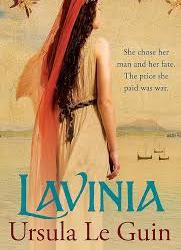
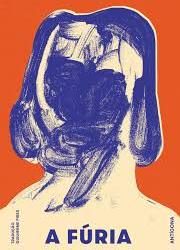
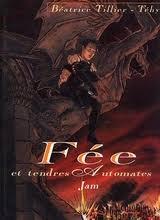





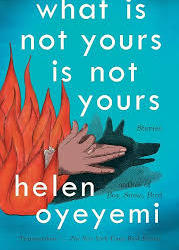
tag meme for posting your favorite 9 books read in 2023
Thank you @meadowlarkx! I'm loving getting to know everyone's book recs from last year.
Tagging with no pressure @sallysavestheday, @mayfriend, @theghostinthemargins, @thalion71, @247reader, @melestasflight, @nablah, @camille-lachenille, @m-b-w, and anyone who'd like to share their recs!
I took the liberty of writing a little about every book under the cut, because it is 22:30 and I am passionate about these books.
Lavinia, Ursula le Guin. It's le Guin, do I have to say it? I really have, because the depths of study on ancient animism in the Italian countryside is extraordinarily well researched, and even aside from the ambitious narrative approach of Lavinia speaking with Aeneas, the study that went into it is one of the most respectful and involving approaches to ancient spirituality I have read.
The Fury is Silvina Ocampo's recently translated short-story compilation! Whole-heartedly recommend any of her short works, which I understand are published with different titles. Reading anything of hers feels like the pervasive grey silence of staying awake till four a.m. as you consider all the familiar people and strangers you have known and reconcile with the strain of incurable isolation and cruelty present in human nature. Life, Silvina tells you, is sharpened and not redeemed by the possibility of understanding. You are not safe from Silvina Ocampo's studies in unsettling mundanity; no one, Silvina warns, is ever safe within themselves. But at least Buenos Aires is very beautiful, and so are all her deliciously malicious women.
The Fée et Tendres Automates (Béatrice Tillier-Téby) graphic book series starts with this book, about Jam, a young man who is not so young, surviving in a dystopic Victorian society while trying to reunite with the sentient mannequin he's in love with...it is moving, it is bold, it has class warfare and magic and a mad scientist, it is gorgeously written and illustrated.
I read The Blue Castle (L. M. Montgomery). Loved the Blue Castle. 'A book about being in your twenties' is a bad summary, but technically not wrong?
I wavered on putting on Claúdia Andrade's short-story collection 'Quarter Finals and Other Stories', because it's not translated, but it was my favourite book of the year, in many ways! An incisive and imaginative writer with a delightfully chilly grasp on human nature. I find myself thinking about the scenes she invokes several times a week. For instance, I think all dying old women should be cursed to speak the truth of every secret they ever knew.
Lords and Ladies was a lot of fun! Also reread Wyrd Sisters. Every years Granny Ogg grows hotter wait who said that.
The Fox (D. H. Lawrence) is about cottage-core lesbians, but like, detestable cottage-core lesbians in post-war England. It's terrific psychological work - I was on the edge of my seat the whole time. The last paragraphs haunts me. Will never trust seaweed metaphors again.
The Painter of Birds (Lídia Jorge) is translated. I recommend it. I recommend it a normal amount. I might be lobbying Lídia Jorge for a Nobel, idk. In all seriousness - she is an absolute powerhouse with a career of profound, invasive, masterful works, she's got most Portuguese language and French awards, do get a Nobel while she's still kicking. God!! This book!!!!
What Is Not Yours Is Not Yours (Helen Oyeyemi) is like nothing else. Ruiz Zábron married Angela Carter and then had an affair with Olga Tokarczuk? But it's queer and it's not white and unapologetic about being undefinable speculative fiction. Still chewing on it. Wonderful, wonderful, terrific.
32 notes
·
View notes
Text
Since I couldn't accept all the applications for interviews, I wanted to shout out a couple of the titles that didn't make the cut! These don't quite fit my target audience but that being said, I think the indie community should have solidarity regardless of age category and genre, so I still want to help y'all with promotion however I can!
If you want to support some cool authors, you can check out their books here, and if you want to support me, you can watch through my playlist backlog of interviews. My channel isn't monetized yet but the watch hours certainly wouldn't hurt lol
If you want to see the lineup for the rest of the year, you can sign up for my newsletter! I'll be sharing the list at the end of the month!
Oak King Holly King by Sebastian Nothwell @nothwell
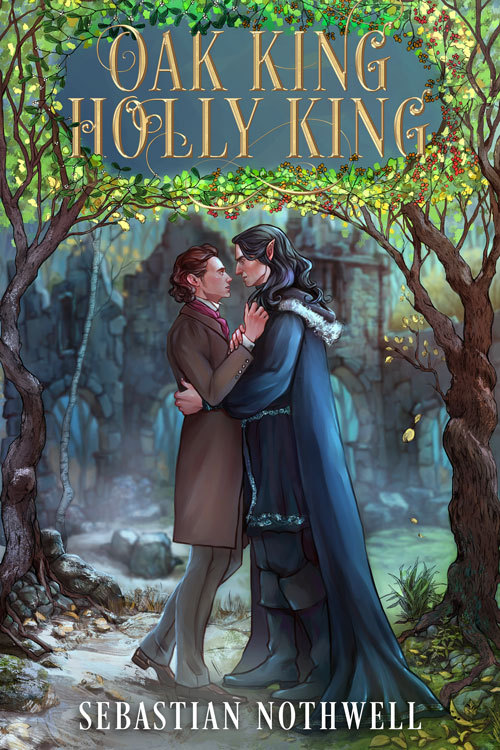
queer romantasy; historical fantasy; adult
Shrike, the Butcher of Blackthorn, is a legendary warrior of the fae realms. When he wins a tournament in the Court of the Silver Wheel, its queen names him her Oak King - a figurehead destined to die in a ritual duel to invoke the change of seasons. Shrike is determined to survive. Even if it means he must put his heart as well as his life into a mere mortal’s hands.
Wren Lofthouse, a London clerk, has long ago resigned himself to a life of tedium and given up his fanciful dreams. When a medieval-looking brute arrives at his office to murmur of destiny, he’s inclined to think his old enemies are playing an elaborate prank. Still, he can’t help feeling intrigued by the bizarre-yet-handsome stranger and his fantastical ramblings, whose presence stirs up emotions Wren has tried to lock away in the withered husk of his heart.
As Shrike whisks Wren away to a world of Wild Hunts and arcane rites, Wren is freed from the repression of Victorian society. But both the fae and mortal realms prove treacherous to their growing bond. Wren and Shrike must fight side-by-side to see who will claim victory - Oak King or Holly King.
Spirits and Sunflowers by A.D. Armistead @adarmisteadwrites

MM adult contemporary fantasy romance
Devastated by the recent death of his husband, Adrian has been relying upon his necromantic gifts to try and bridge the gap between the living and the dead, feeling more and more like a ghost himself with each failure.
After a young girl named Tula with an uncanny ability approaches Adrian on a visit to the cemetery, he begins to hope that the husband he lost may still be within reach. Over time, he falls into an easy friendship with Tula’s father, Lucas Halpern. As Adrian is drawn into the orbit of the handsome, mysterious single father, Adrian begins to emerge from his grief, wondering whether it’s possible to find love again.
Together, in a contemporary world laced with magic, Adrian embarks on a journey in recovering from loss, building trust, and finding love and family where they are least expected.
Spirits & Sunflowers is the first book in the Maligned Magic series, a group of cozy queer romances set in an alternate version of our world. There, magic is tightly regulated by a distant and inflexible organization. All stories can be read as standalone novels, but benefit from reading the previous books in the series in order.
Hills of Heather and Bone by K.E. Andrews (@/k.e.andrews on IG)
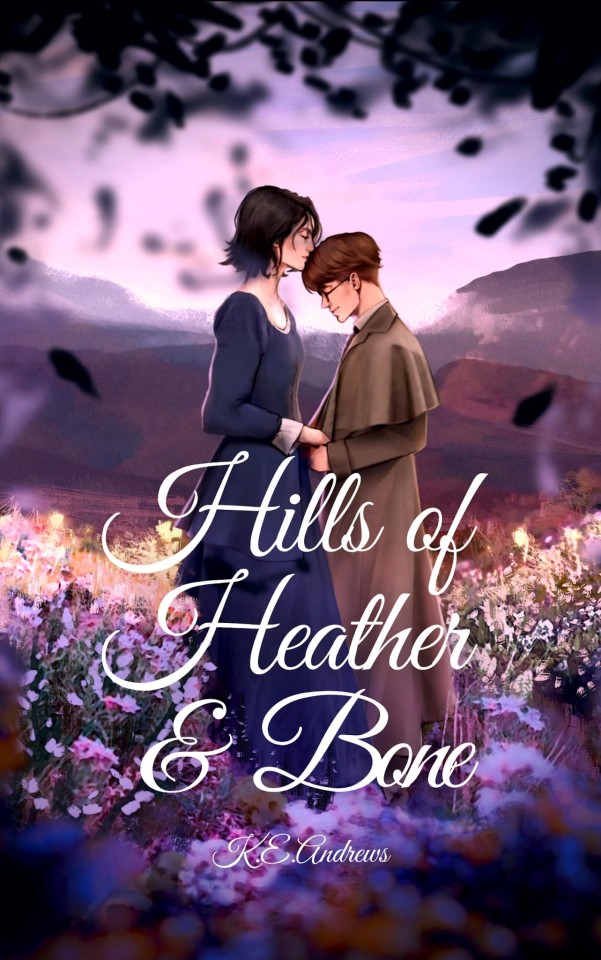
Fantasy, adventure, cozy dark fantasy
Hills of Heather and Bone
The bones of the dead hold stories.
On the fringes of Errigal, Morana longs to exchange a life of hiding for a peaceful one with her husband, Percy. While Percy's bloodgift lets him grow plants and heal broken bodies, Morana's a boneweaver, despised and feared because she can hear bones and raise the dead. Morana doesn't want to be seen as a villain from the old stories and instead spends her time gardening, writing the stories of the dead, and fending off a spiteful chicken.
Morana and Percy's lives are shattered when a group of Failinis tasked with capturing boneweavers and rogue bloodgifted find them. On the run and battling the elements, ancient creatures, and the loss of all they called home, Morana and Percy search for any sanctuary left in Errigal. Morana must choose between the call in her blood or the family she holds so close to her heart if she and Percy are to survive.
Please be aware that this book contains some scenes of violence, death, depression, mentions of miscarriage, birthing scenes, suicidal thoughts, suicide, and cannibalism
Keep Me Breathing by U.R. Holm

Soft Sci-Fi/Subterrainean/Adult
Keep Me Breathing
Fubuki has no reason to leave the comfort of her home. No desire to see the cave system outside.
Sakura has no desire to stay put. Even as a single mom, she brings her son with her on her travels.
But when her son goes missing, Fubuki joins her across the cave system to find him.
The pair is joined by Alexandr, the alternative drummer, and Casey, the fraud who insists he wants to help.
In the search for the boy they all have to face their own personal struggles and insecurities. And while they travel to find the boy, the boy is fighting his own battles against his captors and in a world between adults and children.
While Keep Me Breathing is a novel with fantastical elements, it's even more a novel about friendship, love and familiar bonds.
#etta rambles#writeblr#other people's writing#writeblr community#love you romantasy gang#you're so creative and cool and I love what you've done for the indie publishing space as a whole#but as an aroace middle grade writer#I simply cannot keep up 😅#You are like the cool kids clique in the high school cafeteria and I'm busy catching flies in the bathroom to feed my praying mantids#true story
14 notes
·
View notes